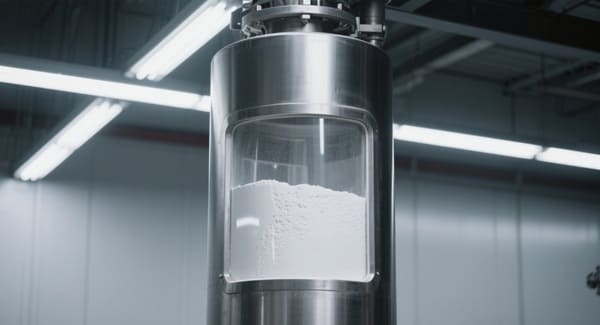Ceramic Powders for Higher Conductivity in Semiconductors: Key Roles
The semiconductor industry is undergoing rapid transformation driven by demands for smaller, faster, and more energy-efficient devices. Traditional metallic conductors face limitations in thermal stability and miniaturization, which has opened the door for innovative materials. Ceramic powders, long regarded primarily as insulators, have evolved significantly. Through advances in material engineering and processing, ceramic powders now enable enhanced electrical and thermal conductivity, making them critical for next-generation semiconductor components. This article explores the important roles ceramic powders play in achieving higher conductivity, their types, manufacturing techniques, applications, and future trends influencing semiconductor technology.
At Advanced Ceramic Hub, we specialize in high-quality ceramics products, ensuring optimal performance for industrial and scientific applications.

What Are Conductive Ceramic Powders and How Do They Work?
Conductive ceramic powders consist of ceramic particles designed to facilitate electron or phonon transport, thereby improving electrical and thermal conductivity in semiconductor devices. Unlike conventional ceramics known for insulation, these powders are doped or chemically modified to possess conductive properties without sacrificing their inherent thermal and chemical stability.
| Ceramic Powder | Material Class | Electrical Conductivity (S/cm) | Typical Use Case |
| Indium Tin Oxide (ITO) | Oxide | 10³ – 10⁴ | Transparent electrodes, displays |
| Titanium Nitride (TiN) | Nitride | 10⁴ – 10⁵ | Conductive barriers, interconnects |
| Silicon Carbide (SiC) | Carbide | 10² – 10³ | Power electronics, high-temp devices |
| Doped Zinc Oxide (ZnO) | Oxide | 10¹ – 10³ | Thin-film transistors, sensors |
These powders work by creating conductive pathways through electron hopping, metallic bonding, or phonon transport, which are crucial for managing heat and electrical signals at micro and nano scales.
How Do Ceramic Powders Improve Semiconductor Conductivity?
Ceramic powders contribute to semiconductor performance in several ways. Their inclusion in semiconductor layers enhances charge carrier mobility and optimizes thermal conductivity. Thermal management is vital as semiconductor devices shrink, generating heat that can degrade performance and lifespan. Ceramic powders help dissipate this heat efficiently.
Key Roles Ceramic Powders Play:
- Increasing charge carrier mobility through controlled doping and crystal structure
- Enhancing thermal conductivity to reduce hotspots and thermal stress
- Acting as diffusion barriers preventing metal migration in multilayer devices
- Improving electrical insulation while allowing controlled conduction in mixed materials
By integrating ceramic powders into thin films, substrates, and interconnects, semiconductor manufacturers can push performance boundaries while maintaining device reliability.
Which Ceramic Powders Are Most Effective in High-Conductivity Applications?
Certain ceramic powders have emerged as leaders in conductive and thermal roles due to their optimal physical and chemical properties. Selection depends on the specific conductivity requirements, operating environment, and integration method.
| Ceramic Powder | Electrical Role | Thermal Role | Application Examples |
| Aluminum Nitride (AlN) | Low | Very High | LED substrates, power IC packages |
| Beryllium Oxide (BeO) | Low | Extremely High | RF components, microwave circuits |
| Indium Tin Oxide (ITO) | High | Moderate | Touchscreens, solar cells |
| Silicon Carbide (SiC) | Moderate | High | High power transistors, diodes |
| Doped Zinc Oxide (ZnO) | Moderate | Moderate | Sensors, thin-film transistors |
While BeO offers unrivaled thermal conductivity, its toxicity requires careful handling. AlN balances thermal performance and safety, making it widely used in power electronics. ITO remains dominant in transparent conductive films despite moderate thermal capabilities.
Explore our high-quality ceramic powder products.
How Do Ceramic Powders Compare with Other Materials in Conductivity?
Compared with metals and polymers, ceramic powders offer a unique balance of conductivity, thermal stability, and chemical resistance, making them ideal for demanding semiconductor environments.
| Property | Ceramic Powders | Metals | Conductive Polymers |
| Electrical Conductivity | Medium to High | Very High | Low to Medium |
| Thermal Conductivity | High | Very High | Low |
| Chemical Stability | High | Moderate | Low |
| Operating Temp Range | Wide (up to 2000°C) | Moderate | Low (<150°C) |
| Mechanical Strength | Brittle | Ductile | Flexible |
Metals provide superior electrical conductivity but often suffer from electromigration and oxidation. Polymers offer flexibility but lack thermal resilience. Ceramic powders fill the niche where a combination of heat resistance and moderate conductivity is essential.
What Processing Methods Are Used for Conductive Ceramic Powders?
Producing high-performance conductive ceramic powders involves sophisticated processing to control particle size, purity, and doping levels.
Typical Processing Steps Include:
- Powder Synthesis: Chemical precipitation, sol-gel, or solid-state reaction to produce nano- to micro-sized powders
- Doping: Introducing elements like aluminum, gallium, or rare earths to tailor conductivity
- Calcination and Milling: Heat treatment for phase development followed by grinding to control particle size
- Shaping: Tape casting, screen printing, or 3D printing to form films or bulk shapes
- Sintering: High-temperature densification to enhance mechanical and electrical properties
Each step influences the microstructure and thus the electrical and thermal behavior of the final ceramic components.
What Are the Limitations and Challenges of Conductive Ceramic Powders?
Despite many advantages, challenges hinder widespread adoption of ceramic powders in semiconductors.
Key Limitations:
- Mechanical Brittleness: Susceptible to cracking under mechanical stress or bending
- Agglomeration: Nano-particles tend to clump, causing non-uniformity in films and composites
- High Processing Costs: Advanced synthesis and sintering techniques increase production expenses
- Toxicity Concerns: Materials like beryllium oxide require strict safety protocols
- Limited Flexibility: Poor strain tolerance limits use in flexible or wearable electronics
Addressing these issues through material design and processing innovations remains a primary research focus.
What Future Trends Will Shape Ceramic Powder Use in Semiconductors?
The future of ceramic powders in semiconductors is promising due to several emerging trends:
| Trend | Description | Impact on Semiconductor Industry |
| Nano-engineered Powders | Tailored particle size and doping for superior conductivity | Higher device performance and miniaturization |
| Hybrid Ceramic Composites | Combining ceramics with metals or polymers for multifunctionality | Enhanced toughness and flexible electronics |
| Eco-friendly Synthesis | Low-temperature and sustainable production methods | Reduced environmental footprint |
| 3D Printing Integration | Additive manufacturing of ceramic components | Complex geometries and rapid prototyping |
| AI-driven Material Discovery | Machine learning to design new conductive ceramics | Accelerated innovation and customization |
These trends will help overcome current limitations and expand applications of ceramic powders in future semiconductor devices.
Request a custom quote for ceramic powder products.
FAQ
| Question | Answer |
| What makes a ceramic powder conductive? | Conductivity arises from doping, nanostructuring, and the ceramic’s crystal structure. |
| Are ceramic powders safer than metals? | Most are safe, but some like BeO need special handling due to toxicity. |
| Can ceramic powders replace metals entirely? | Not always; metals still offer the highest conductivity but ceramics excel in heat and chemical stability. |
| How do ceramic powders improve heat dissipation? | By providing efficient thermal pathways in semiconductor layers, preventing hotspots. |
| Are conductive ceramic powders used in flexible devices? | Limited use so far due to brittleness, but composites show promise. |
Conclusion
Ceramic powders engineered for enhanced conductivity and thermal management are rapidly becoming essential in semiconductor technology. Their unique combination of thermal stability, chemical resistance, and tunable electrical properties enables semiconductor devices to perform reliably under increasingly demanding conditions. While challenges such as brittleness and processing costs remain, ongoing advances in material science, processing techniques, and hybrid composite design continue to push the boundaries of what ceramic powders can achieve. As the semiconductor industry progresses towards miniaturization, higher frequencies, and energy efficiency, conductive ceramic powders will play an indispensable role in enabling the next generation of electronics.
Looking for high-quality ceramic powder products? Contact us today!
